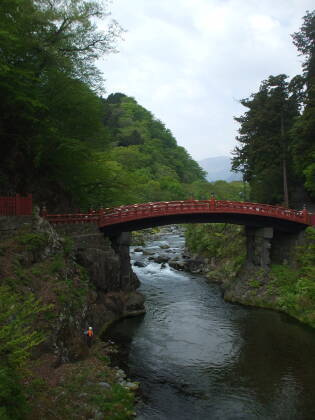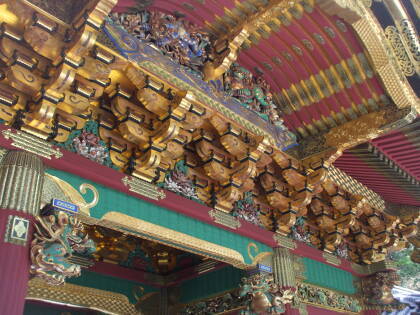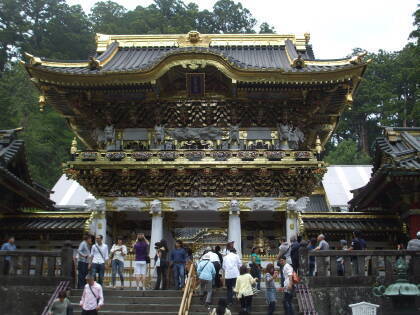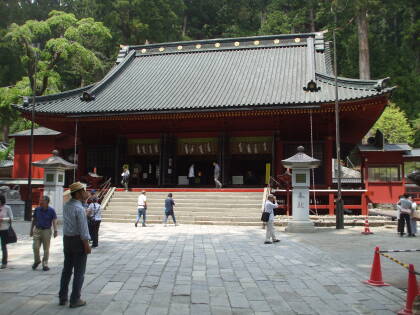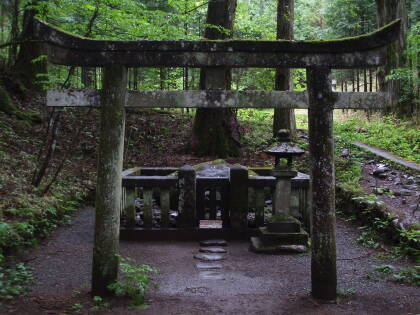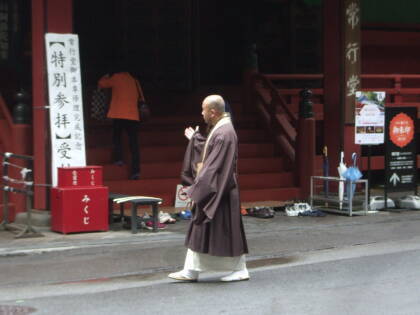
The Kanman-Ga-Fuchi Abyss
Kanman-ga-fuchi Abyss
Kanman-ga-fuchiwalking map
The Kanman-ga-fuchi Abyss is a short walk from the temples and shrines. It's a path along the Daiya river, lined with statues of Jizō. You can get a map from the tourist office along the main street from the train stations.
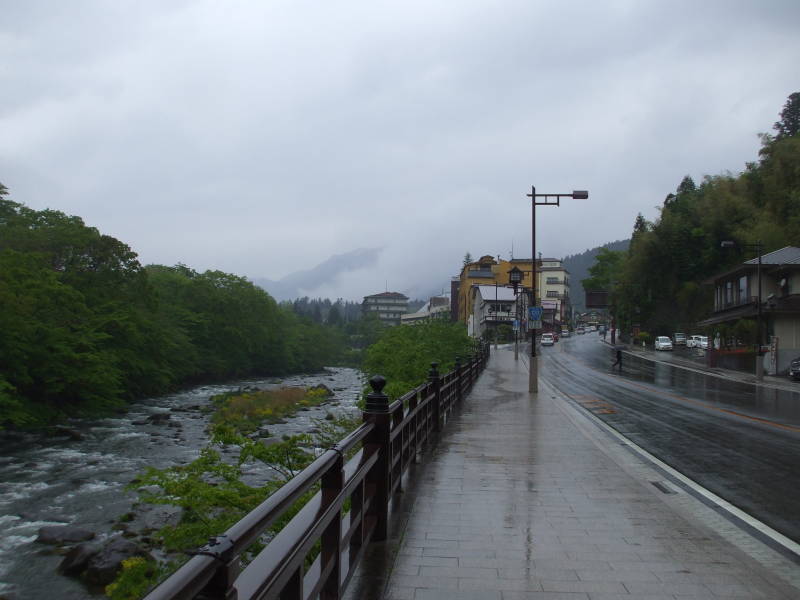
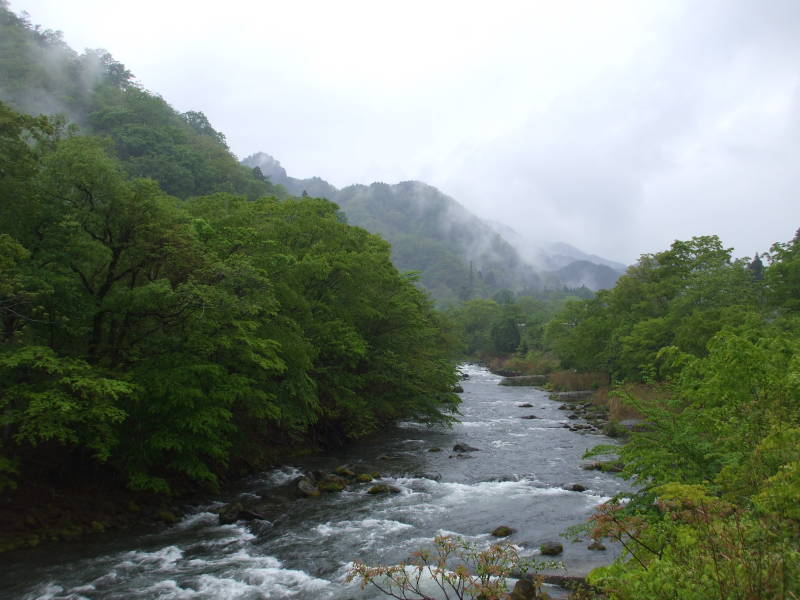
Before long we see the first of the Jizō statues. These were carved by monks led by the abbot Tenkai, who lived 1536-1643.
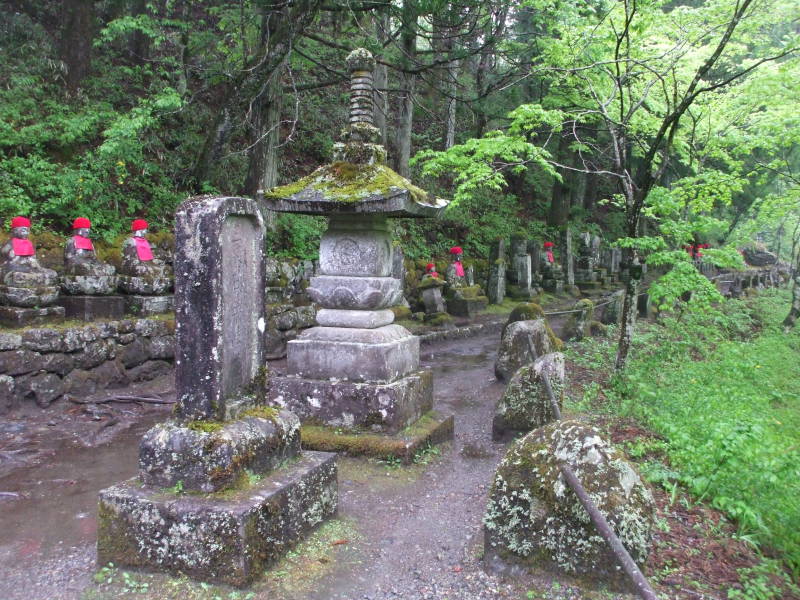
Jizō
Jizō was known as Kṣitigarbha in the original Sanskrit, meaning "Earth Treasury". A fuller form of his name is "Bodhisattva King Kṣitigarbha of the Great Vow". In Japanese that's Daigan Jizō Bosatsu.
As a bodhisattva, Jizō vowed to instruct all beings in the era from the death of the historical Gautama Buddha until the arrival of Maitreya. He is one of the four principal bodhisattvas known in East Asian Mahayana Buddhism.
Jizō has come to be considered in Japan as the guardian of children, and the patron deity of deceased children and miscarried or aborted fetuses.
Japanese mythology says that the souls of children who die before their parents cannot cross the mythical Sanzu River on their way to the afterlife. They have not had the opportunity to accumulate enough good deeds. They would have to pile stones eternally on the banks of the Sanzu River as penance, but Jizō saves them.

The typical iconography depicts Jizō as a monk with a halo around his shaved head. He carries a Cintāmaṇi, a wish-fulfilling jewel that lights the darkness, and a staff to force open the gates of Hell. He usually stands on a lotus base, symbolising his release from rebirth.
Bodhisattvas are typically depicted dressed as Indian royalty, but Jizō/Kṣitigarbha is shown in a monk's simple robe.
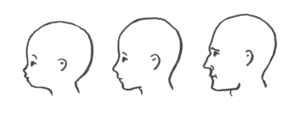
Classic Kopf craniofacial proportion sequence.
Jizō is the Japanese version of Kṣitigarbha, known respectfully as Ojizō-sama. He is associated with children, so many of the representations display neotony. That is, younger features — proportionally larger cranium and eyes, a flattened face, rounded forehead, and a relatively small and gracile mandible.
The paleontologist and evolutionary biologist Stephen Jay Gould pointed out in the journal Natural History that Mickey Mouse was originally drawn with adult characteristics, but over time has been drawn increasingly child-like in facial proportions to make him less threatening and more attractive. His essay also appears in his book The Panda's Thumb: More Reflections in Natural History.
People sometimes make a pile of small pebbles by a Jizō statue in the hopes of shortening the time children have to suffer in the underworld. This is derived from the tradition of building stupas to gain merit.
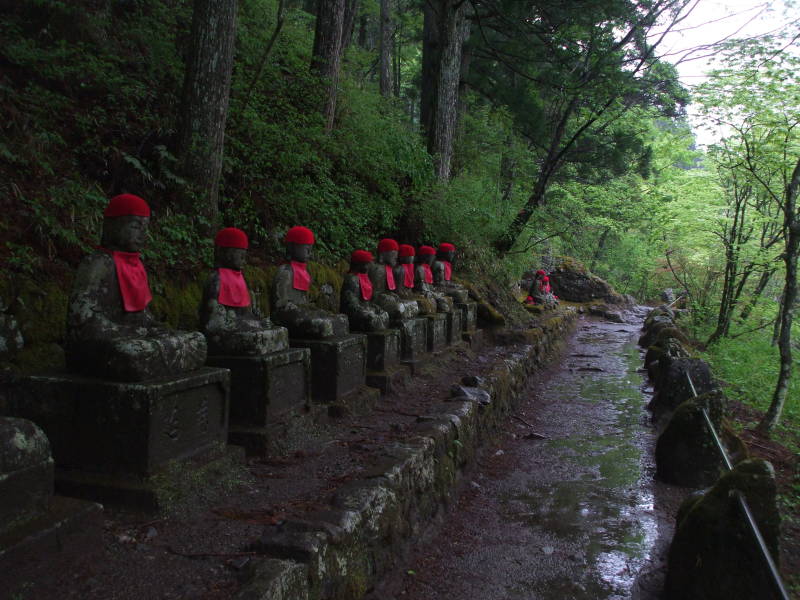
The red bibs and caps may be placed on the statues by grieving parents. Or, by parents thanking Jizō for saving their child from a series illness or injury.
Jizō is also seen as a protector of travelers and firefighters.


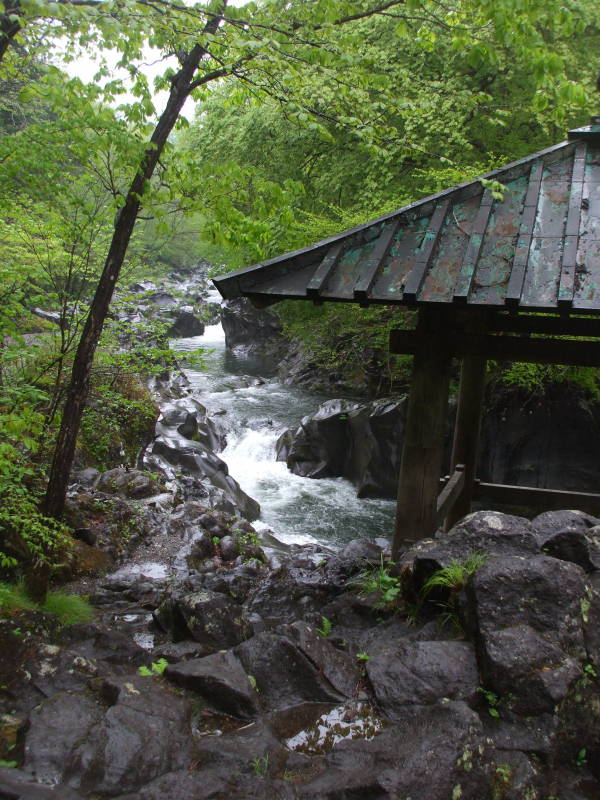
The local people may tell you to count the number of statues as you walk out along the path, and then count them as you return.

The legend is that the statues keep changing places, and the numbers won't agree.
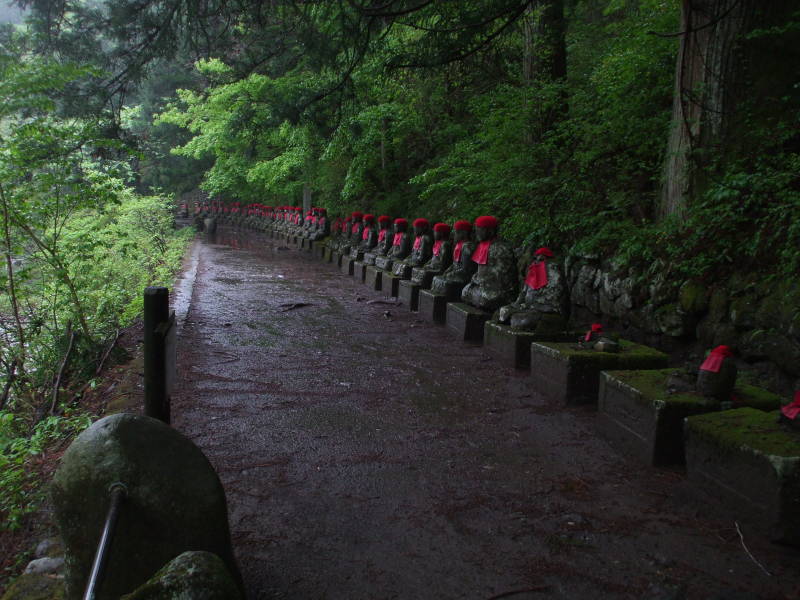
Choose your next stop around Nikkō:
Or, somewhere else around Japan:
